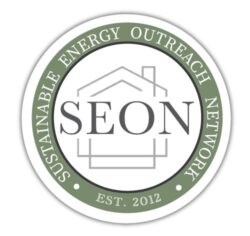The Washington Monument, a towering 555-foot obelisk in the heart of Washington, D.C., stands as a revered symbol honoring the nation’s first president, George Washington. Its cornerstone was laid on September 23, 1848, marking a significant historical milestone. However, in 2011, it faced adversity when a 5.8 earthquake hit the DC area and damaged the monument. The journey to the Washington Monument earthquake recovery has been an eco-friendly testament to resilience, as sustainable measures were integrated into the restoration process, ensuring that this iconic monument would not only stand tall but also stand as a beacon of sustainability and conservation for future generations.
The Earthquake’s Impact
The 2011 earthquake left its mark on the Washington Monument. The damage ranged from visible cracks in the monument’s stones to the unsettling shift of the marble pyramidion crowning the structure. Even the monument’s interior bore the scars of this seismic event, with the elevator shaft cracked and plaster on the walls damaged.
A Sustainable Recovery
In the face of adversity, the National Park Service (NPS) embarked on a mission to not only restore but also fortify the Washington Monument against future seismic events while embracing sustainability principles. Here are some of the remarkable steps taken:
- Seismic Isolation System: Among the most significant measures was the installation of a cutting-edge seismic isolation system. Comprising lead-rubber bearings strategically placed between the monument’s foundation and superstructure, this system absorbs the energy of seismic waves, shielding the monument from future earthquake damage.
- Recycled Materials: Sustainability was at the core of the repair process. Recycled materials, such as concrete for mortar, were used to mend the monument’s cracked stones. This not only reduced the need for new resources but also diverted waste from landfills.
- Energy Efficiency: The NPS prioritized energy-efficient equipment and materials during the repair process, aligning with its commitment to sustainability. This not only ensured responsible resource use but also contributed to a reduced environmental footprint.
- Waste Recycling: Waste was meticulously managed, with recycling efforts aimed at minimizing waste sent to landfills. Even in the face of adversity, sustainability remained a guiding principle.
The Path to Sustainability
The earthquake was undoubtedly a challenge, but it also served as a catalyst for the NPS to fortify its dedication to sustainability. Beyond the Washington Monument earthquake recovery – there has embraced a range of sustainable measures:
- Renewable Energy: The monument is now powered by 100% renewable energy, reducing its carbon footprint.
- Rainwater Harvesting: A rainwater harvesting system collects and stores rainwater for non-potable needs, such as irrigation.
- LED Lighting: The monument utilizes energy-efficient LED lighting throughout, surpassing traditional incandescent lighting.
- Composting and Recycling: The monument has implemented composting and recycling programs for food waste, paper, plastic, metal, and glass.
- Climate Action Plan: The NPS is actively developing a Climate Action Plan to bolster the monument’s resilience to climate change and further promote sustainability.
In a powerful juxtaposition of adversity and resilience, the Washington Monument earthquake recovery showed that the monument could weather the earthquake and emerge as a symbol of sustainable preservation. Its legacy endures, reminding us that historic landmarks can adapt, thrive, and inspire a sustainable and environmentally responsible future for all. Like the U.S. Capitol Building, it stands as a testament to the enduring principles upon which the United States was founded and the commitment to a greener tomorrow.
Want to learn more about sustainable building practices or join the members who train and build as good stewards of our planet? Join us at SEON (Sustainable Energy Outreach Network) to delve deeper into the world of high-performance and sustainability, where history and modernity converge to create a better future for all.

